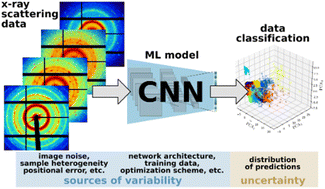Digital Discovery, 2023, 2,1251-1258
DOI: 10.1039/D3DD00094J, Perspective
DOI: 10.1039/D3DD00094J, Perspective
 Open Access
Open Access This article is licensed under a Creative Commons Attribution-NonCommercial 3.0 Unported Licence.
This article is licensed under a Creative Commons Attribution-NonCommercial 3.0 Unported Licence.Line Pouchard, Kristofer G. Reyes, Francis J. Alexander, Byung-Jun Yoon
The capability to replicate the predictions by machine learning (ML) or artificial intelligence (AI) models and the results in scientific workflows that incorporate such ML/AI predictions is driven by a variety of factors.
The content of this RSS Feed (c) The Royal Society of Chemistry
The capability to replicate the predictions by machine learning (ML) or artificial intelligence (AI) models and the results in scientific workflows that incorporate such ML/AI predictions is driven by a variety of factors.
The content of this RSS Feed (c) The Royal Society of Chemistry

